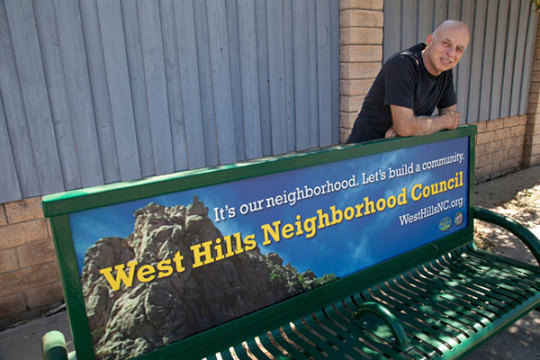
Candidate campaign page: http://danielbrin.com/
As a self-identified bicyclist, Daniel Brin has first-hand experience with the need for safer streets and better bicycle infrastructure. As a member of the West Hills Neighborhood Council, he worked to communicate Vision Zero Los Angeles’ Education Campaign, and advocated to extend the L.A. River Bike Path into West Hills. Brin’s response to Bike The Vote L.A. displays a commitment to provide for a safer and more sustainable transportation system that shows he would make a strong ally within the California Assembly for the safe streets movement.
Bike The Vote L.A. 2018 Primary Grade: B+
(See below for full candidate questionnaire response)
1. The California Air Resources Board estimates that transportation accounts for 37% of California’s annual carbon emissions. What actions would you take as assemblymember to ensure that California creates a more sustainable transportation system?
First, we need to redouble our efforts to transition from internal combustion engines to electric vehicles charged with energy from renewable sources. (For example, I charge my Volt with energy offset by the solar panels on my house.)
To this end, some of the initiatives to pursue include:
a. A requirement for all gas stations, shopping centers and medium-to-large size restaurants to include rapid-charge stations for electric vehicles. This is especially important on routes radiating from urban centers to alleviate range anxiety for potential drivers of all-electric vehicles.
b. Tax incentives for trucking firms, bus services and ride-sharing fleets to convert to electric vehicles. These incentives can be offset by a carbon tax that also makes electric vehicles more competitive.
c. Strengthen and accelerate mandates leading to eventual prohibition of internal combustion vehicles being sold in the state.
In addition, we need to strengthen and expand mass transit within and between population centers. A rail line over or through the Sepulveda Pass should be one of our highest priorities.
2. Cap & trade funds offer a unique opportunity to prioritize sustainable transportation, particularly in low-income neighborhoods negatively affected by pollution caused by cars. Do you support dedicating a portion of cap and trade funds towards the Active Transportation Program to help fund better pedestrian and bicycle infrastructure?
Absolutely, yes. I am a cyclist.
3. In Los Angeles, low-income communities of color are disproportionately burdened by the impacts of streets designed primarily for cars, without receiving proportional funding for their mobility modes like walking, biking, and public transit. Would you support legislation to add a ‘complete streets’ policy to SB 1, California’s newly augmented gas tax, to require all street and highway projects to incorporate the needs of pedestrians, bicyclists and transit-dependent communities?
Yes.
4. California law regarding the position bicyclists can occupy in a traffic lane is written in a confusing manner. The typical condition – in which the rightmost lane is too narrow for a car and a bicycle to travel safely side-by-side and the bicyclist is thus allowed to use the full lane – is written as an exception rather than the default standard. As a result, despite public information campaigns such as “Every Lane Is A Bike Lane,” there is frequently confusion from the general public and even law enforcement agencies on the legality of bicyclists riding in traffic lanes on California roads. Do you support re-wording traffic law to clarify the right of people on bikes to ride to maximize their visibility and safety?
Definitely.
5. A recent study by the National Transportation Safety Board found that speeding was one of the most common factors in crashes, and one of the highest contributors towards fatal crashes. Despite this fact, speed limits across California are consistently raised due to a state law that sets speed limits at the 85th percentile of measured driving speeds. Do you support reform to the 85th percentile rule to give local jurisdictions the ability to set speed limits to better promote safe driving?
Speeding is a terrible problem that has caused many deaths in my community of West Hills. I will support any means, including automated speed enforcement, citizen reconnaissance (in cooperation with police) and aggressive prosecution of street racers, to put an end to it.
(Our West Hills Neighborhood Council is actively engaged in the Vision Zero program. We organize youth poster contests and are in the process of funding a wide variety of other projects, including bus bench ads, a bike rodeo at a local park, bike repairs and giveaways through Fleet Street, display of an LAPD “crash car” at our Spring Fest, etc. On my own, I am lobbying RiverLA to extend the River Bike Path along Bell Creek into West Hills and am arranging for a delegation from RiverLA and Gehry Associates to tour our community on March 7. I have been working on this project for several years and am excited to reach this stage.)
6. California’s ongoing housing crisis challenges cities and communities to provide solutions towards meeting California’s demand for housing. Do you support efforts at the state level to accommodate smart growth, transit-oriented development, and sustainable communities that empower residents to get around on foot, by bike, and on quality public transit? What specific policies you would pursue to promote sustainable and affordable living for Californians?
Yes!
